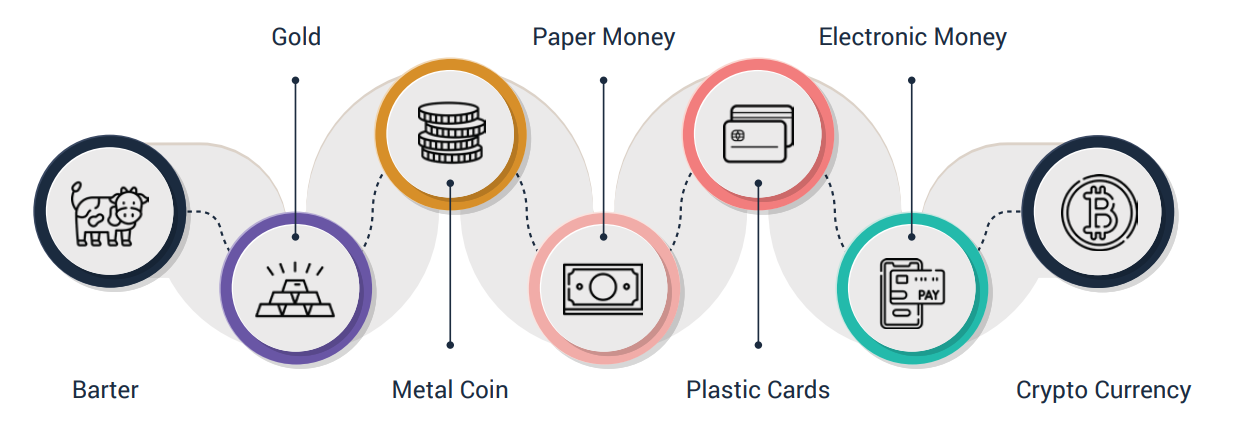Since its inception, the cryptocurrency market has been branded the ‘Wild West’ of the financial world. Indeed, the moniker isn’t necessarily unfounded; price volatility, cryptocurrency exchange collapses, and characters like Sam Bankman-Fried haven’t helped ease concerns about the crypto landscape.
Cryptocurrencies naturally challenge the status quo of traditional financial structures, and in some ways, that will never change. Yet many also view their decentralized and borderless nature as full of potential but needing regulation.
Over the past 15 years, the ideology of crypto regulation has also evolved considerably. As the regulatory market matures, regulators and investors have developed mutual interests, such as establishing stability and safeguards.
The crypto regulatory ecosystem looks more promising these days, but there’s still some way to go. Looking back at the history of crypto regulation can help shed light on the future direction of digital finance.
Are you an investor looking to assemble entities worldwide and unlock cryptocurrency jurisdictions? Otonomos can help. Book a free call with our experts today to learn how we can help you incorporate legal entities around the globe.
What's on this page?
- The birth of crypto and early responses
- The evolution of regulatory frameworks in crypto
- Crypto founders on regulatory scrutiny
- Future regulatory paradigms
1. The birth of crypto and early responses
While cryptocurrency introduced us to the hugely beneficial worlds of blockchain and smart contracts, its formative years posed plenty of challenges.
Unsurprisingly, the 2008 crash shook the structural foundations of fiat currency and paved the way for the birth of Bitcoin and others. Despite risk and volatility, early crypto investors made considerable gains through digital investments in the first few years, rattling traditional structures. At the time, this unbacked, decentralized, and largely anonymous cryptocurrency market garnered plenty of attention, not all of it positive.
Crypto’s dubious links to activity on the Silk Road, the dark web marketplace where users bought illicit things like drugs, brought skepticism. The FBI shut down the market in 2013, painting an us vs. them image of the crypto landscape: those on the right side of the law and those who weren’t.
The high-profile hacking of the Mt. Gox cryptocurrency exchange in 2014, which at its height facilitated more than 70% of Bitcoin transactions, also fuelled uncertainty about the viability of this market. The hack exposed vulnerabilities in the places where crypto is handled and resulted in Mt. Gox declaring bankruptcy, with crypto investors ultimately paying the price.
This period marked a time of regulatory exploration, with early responses to the emerging crypto landscape remaining largely informal. Examples included the U.S. Financial Crimes Enforcement Network (FinCEN) Guidance that, as its name suggests, was essentially guidance for businesses using virtual currencies. In 2014, the Financial Action Task Force (FATF) released its first guidance on cryptocurrencies, which helped to define virtual currencies and raise awareness about the risks.
Regulatory experimentation coincided with plenty of criticism, and the fact that it wasn’t taken seriously perhaps delayed the emergence of impactful regulation. Leading figures expressed skepticism about cryptocurrency then, including the CEO of JPMorgan, who said in 2017, “It’s worse than tulip bulbs. It won’t end well. Someone is going to get killed.” Warren Buffet similarly called crypto “probably rat poison squared” in 2018.
Ideological tension between libertarian ideals and government regulation was a defining characteristic at this time. The crypto pioneers were largely anti-regulation, with many feeling it would limit opportunity and ultimately undermine the fundamental core of crypto itself. Early regulatory guidance did little to impact the broader market, ease ideological concerns, or even keep pace with the rapid evolution of crypto.
2. The evolution of regulatory frameworks
Fast forward a few years, and the initial skepticism we saw during the birth of crypto had started to erode. The period around 2017 was a turning point and a transition toward acceptance. But why the change of heart?
Having withstood the turbulence of the first few years, the cryptocurrency market began to mature and showcase resilience. Alongside Bitcoin, Ethereum entered the scene, as did smart contracts and decentralized apps (dAPPs). Tether (USDT), the most successful stablecoin to date, began to take off, and it started to look like cryptocurrencies weren’t going anywhere. In January 2017, 636 cryptocurrencies were listed on CoinMarketCap, and within a year, that had doubled to 1,359.
It was also around the time that Bitcoin’s market value soared to $300bn. This growth attracted institutional investors, signaling crypto’s entry into the mainstream. The sheer scale of crypto value and the number of investors involved demanded more clarity on regulation, protections, and stability.
More nuanced regulations started to emerge. For example, the SEC’s approval of Bitcoin Futures in 2017 paved the way for institutional investor crypto trading, a pivotal moment in accepting crypto. Around the same time, SEC regulators also moved to police initial coin offerings (ICOs) by identifying some as securities in an attempt to protect investors. These fractured attempts at regulation were piecemeal at best.
The lack of unified regulation during this time resulted in regulatory arbitrage. Jurisdictions adopted widely different stances on how to work with crypto and it led to issues for investors, businesses, and regulators. Clearly, a more cohesive regulatory approach was needed.
3. Crypto founders on regulatory scrutiny
The shifting regulatory landscape required the cooperation of the crypto community. The ideological tension that positioned crypto leaders at odds with regulators had started to evolve.
Notably, several prominent figures in the crypto community have expressed evolving views on regulation. Coinbase CEO Brian Armstrong, for instance, shared his take on the US regulatory landscape last year, highlighting the need for a proactive approach to avoid falling behind in the global crypto race.
“As other countries implement regulations and guidelines for cryptocurrency, the U.S. risks falling behind both technologically and politically,” he wrote in an op-ed for CNBC. He added, “The U.S. government needs to take a more proactive approach to cryptocurrency and provide a clear regulatory framework for the industry, one with forward-looking policies that recognize the many unique and innovative aspects of blockchain technologies.”
This doesn’t necessarily mean crypto pioneers agree with all the goals of regulation, far from it. After all, regulation does pose challenges to costs and the speed of innovation, with developers forced to operate under more oversight. However, crypto founders were more open to finding common ground that could work to their advantage, which has to count for something. Over the last few years, we have seen crucial acceptance of the reality that the two sides must work together.
4. Future regulatory paradigms
Last year’s Binance money laundering scandal reminds us of the ongoing risks of a largely unregulated crypto ecosystem. The regulators won’t back off after such a massive scandal. Yet, in early 2024, CoinDesk also revealed that only 30% of jurisdictions had attempted to regulate cryptocurrency. And this reveals discrepancies in the regulatory narrative.
Perhaps past attempts at taming the market, like Bitcoin Futures, were down to cautious acceptance by established financial systems rather than genuinely effective regulation.
Looking ahead, any significant regulation implemented will need to rely on international standards and collaboration between countries, helping to create a level playing field that promotes cross-border transactions. Despite having its issues, the 2023 introduction of Markets in Crypto-assets (MiCA) in the EU paints a picture of what cross-border regulation may look like.
We also need to strike a balance between centralized and decentralized approaches, paving the way for an entirely new regulatory model. The emergence of hybrid models also offers a glimpse of a more collaborative regulatory future that relies on the input of businesses and investors. Regulatory sandboxes in FinTech, for example, encourage firms to experiment in a controlled environment and may help regulators better understand effective policies.
Many crypto folks have hinted that a blend of artificial intelligence (AI) and cryptocurrency may help better define the regulatory landscape. While AI indeed needs regulation itself, it may also be a powerful tool in fraud detection, auditing, and tailoring regulatory frameworks to specific crypto prerequisites. Developments here are promising but will take some years to come to fruition fully.
Some 15 years after Bitcoin burst onto the scene and revolutionized the financial world as we knew it, the dust is finally settling, and we’re beginning to see a clearer picture of how regulation may work. The imperative for developing a more regulated crypto future will hinge upon standardization, globalization, and collaboration.



